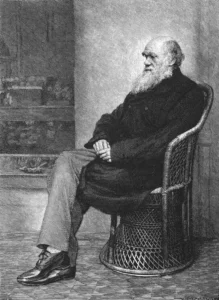Click below to go to:
|
|
 |
Darwin in ‘The expression of the emotions in man and animals’ (1889) explains crying and tears as reflex actions which ‘have come on rather late in the line of our descent’. He says they originally served the purpose of lubricating the surface of the eye, keeping the nostrils damp so that the inhaled air may be moist, to favour the power of smelling and to wash out particles of dust from the eye. Crying could potentially be associated with many different stimuli such as the relief of suffering in children and become a learnt behaviour. Darwin did not regard crying as having evolved as a result of any psychological function it performed. “In accordance with this view, we must look at weeping as an incidental result, as purposeless as the secretion of tears from a blow outside the eye“.
Oatley (1992) considers in detail whether emotions are vestiges of the past (ie irrational and non-functional) or whether they have a function which enhances survival, favouring the idea that emotions represent automatic behaviour mechanisms installed during evolution. Many other psychologists assume emotions evolved because of their adaptive value to humans. Panksep (1982) refers to them as ‘hard wired neural circuits in the visceral-limbic brain‘ facilitating adaptive behaviour. Plutchik (1987) regards crying as a class of ‘care-soliciting’ behaviour which increases survival by encouraging others to help the crier. Frijda (1986) proposed that all emotions represent an ‘action tendency’, the expression of which has an impact on other people and the environment; crying stimulates others to remove the discomfort.
Evans (2001) points out that for this idea of care soliciting ‘to be a plausible evolutionary explanation, of course, crying must have evolved after the emotion of sympathy or co-evolved in tandem with it’ and that it does not explain adequately why a person can feel better when crying in private.
Evolutionary psychology explanations have generally been criticised as post hoc and untestable (Rose & Rose 2000) and Calverly* discusses the methodological difficulties as relating to crying.